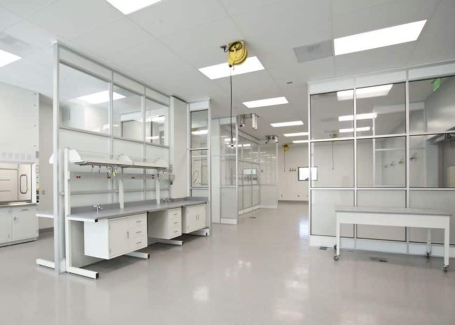In manufacturing, especially in industries that require highly controlled environments, such as pharmaceuticals and food production, following regulations is a necessary step in creating high-quality products. To make sure that products stay safe and consistent, the Food and Drug Administration (FDA) has implemented regulations such as Good Manufacturing Practices (GMP) and current Good Manufacturing Practices (cGMP). For companies looking to build cleanrooms, understanding the differences between cGMP and GMP is important. In this article, we will define what cGMP and GMP are, as well as outline some of their differences.
Definition of GMP and cGMP
Good Manufacturing Practices (GMP) is a set of standards that helps regulate the consistency and quality of products. GMP regulations make sure that each product is made the same way every time, which keeps them safe and effective for everyone. This includes regulations on how to manage raw materials, facilities, equipment, and staff. In short, GMP guidelines ensure that all aspects of production meet strict quality standards.
Current Good Manufacturing Practices (cGMP) expands on GMP principles by combining them with the latest technology and practices. The “current” part suggests the need for updates and improvements. This is so that manufacturing processes continue to use the best available methods. In a cleanroom context, this is important because the latest standards and technology can significantly affect product quality. In short, cGMP regulations ensure that manufacturers adopt innovative technologies and constantly improve their practices.

Differences Between cGMP and GMP
Regulatory Updates
- GMP is a stable framework for manufacturing practices. It is mostly static, and it only changes when new regulations are issued. GMP regulations address the essential requirements for maintaining a controlled environment in a manufacturing facility.
- cGMP, on the other hand, changes often. Guidelines are updated whenever technological or scientific progress can improve practices. This ensures that manufactured goods remain safe and effective.
Implementing New Technology
- GMP supports the use of established technology to meet its standards, including older methods that are still working.
- cGMP supports the use of the latest technologies and processes, encouraging manufacturers to integrate innovative technologies that improve product quality.
Adaptation to the Latest in Science
- GMP standards do not adapt to new scientific findings unless regulations are updated.
- cGMP incorporates the latest research and constantly improves manufacturing processes, ensuring that medical devices, pharmaceuticals, and other products are produced using the best available methods.
Costs
Additionally, implementing cGMP can be more expensive than GMP due to the need for continuous updates and the integration of new technologies.
How We Can Help Your Cleanroom Operations
For businesses looking to create or upgrade cleanroom facilities, integrating GMP and cGMP practices is an important step. Our cleanroom engineers at Allied Cleanrooms offer expert guidance on cleanroom solutions that are tailored to meet cGMP, GMP, and other regulations. Reach out to us today for a free quote, and let us help you optimize your cleanroom operation.

The Bottom Line
Understanding the difference between cGMP and GMP is important for any business committed to product quality and consistency. By staying up to date with cGMP regulations, companies can manufacture products of the highest quality and integrate the latest advancements in science and technology. Ensuring compliance with both GMP requirements and cGMP helps maintain high-quality standards in the production of pharmaceuticals, food products, and medical devices.






